Tattoo numbing creams (and sprays) are applied to the skin to reduce pain during the tattooing process. Less pain means clients can sit longer - and flinch less - saving you time and preventing mistakes in your designs.
While numbing creams can’t give someone a “painless tattoo,” knowing when to use it - and how to use it correctly - can make a big difference for customers that need pain relief.
In this article, we’re breaking down:
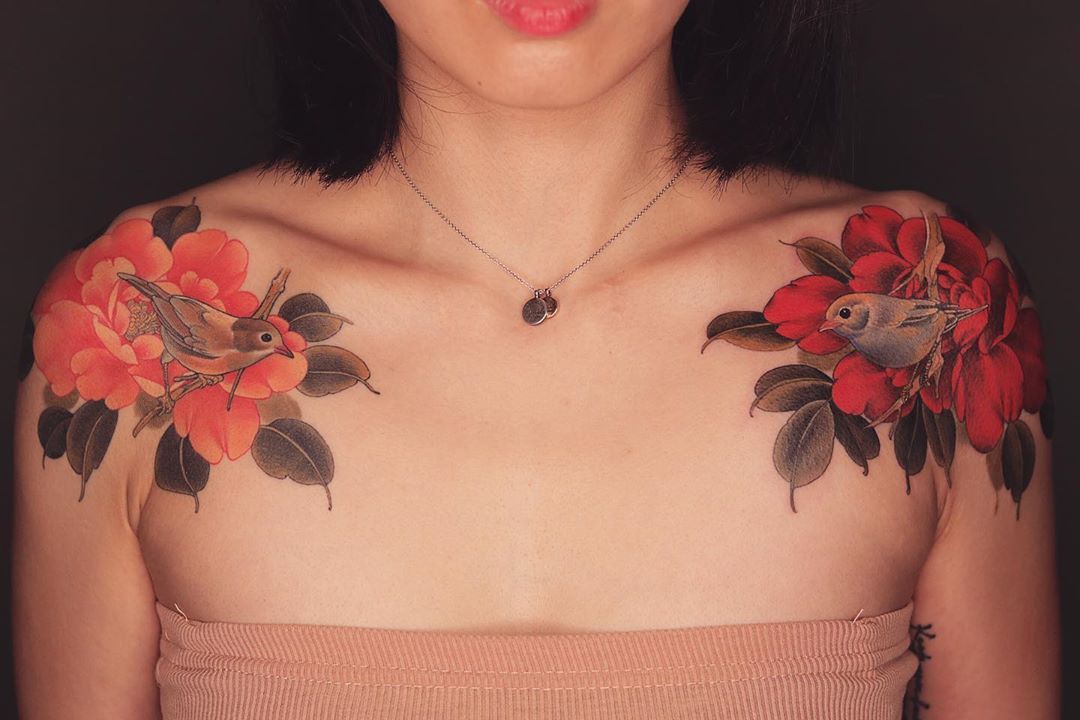
Does Numbing Cream Actually Work for Tattoos?
This is the top-asked question about numbing creams and sprays. Many tattoo artists have found that they don’t work, but this is usually because they didn’t know numbing cream takes a while to kick in, or that it works better when paired with other products.
Without giving the cream enough time to work or using the other topical anesthetics you need for it to work right, then it’ll seem like the cream has done nothing.
Note:
Some tattoo artists don’t like to use numbing cream because it can make the skin feel different while tattooing. Others refuse to use it because they feel that the pain of the tattoo process is part of “earning” a tattoo. Our take is that part of being a tattoo artist is trying to keep the client comfortable during their session, even if they have sensitive skin. For that reason, we recommend keeping some tattoo anesthetics on hand, just in case.
What Does Tattoo Numbing Cream Do?
What ingredients are in a numbing cream and spray changes the way it works. Here’s a quick rundown:
- 1Nerve Deadeners Stop the Initial Pain
These creams stop nerves from registering that first shock of pain when the tattoo needles hit the skin. However, nerve deadeners don’t go very deep in the skin, so the nerves beneath that first layer will still feel the needle.
Active Ingredient: Lidocaine
- 2Nerve Blockers Make the Pain Bearable (Not a “Pain-Free Tattoo”)
There is no “painless tattoo numbing cream.” Nerve blockers still let the nerves register pain, but they dull the intensity of the pain signals that are sent to the brain. Instead of screaming “OUCH!” someone with a nerve blocker might simply say, “That hurts.”
Active Ingredient: Tetracaine or benzocaine.
- 3Vasoconstrictors Help Numbing Creams Last Longer
These work by constricting blood vessels (to reduce bleeding and swelling) and slow down the absorption of other anesthetics, which means a nerve blocker or deadener will last longer. Without a vasoconstrictor, the other creams will probably wear off about halfway through.
Active Ingredient: Epinephrine.*
*Epinephrine can raise the heart rate, so use the smallest amount possible. If a client is very anxious about their appointment or has a heart condition, have them consult with their doctor before using epinephrine.
Because each of these ingredients works differently, you’ll get the most numbing effects from using products that have each of the active ingredients.
Nerve deadeners and blockers take longer to have an effect, so you can recommend your client apply them and wrap the area loosely with plastic wrap before they come to their appointment.
Note:
These active ingredients are powerful medications. They should be used sparingly, and on as small of an area as possible. If using plastic wrap, only wrap the area loosely and never use heat to activate the ingredients. Too much of these medications entering the bloodstream can be dangerous.
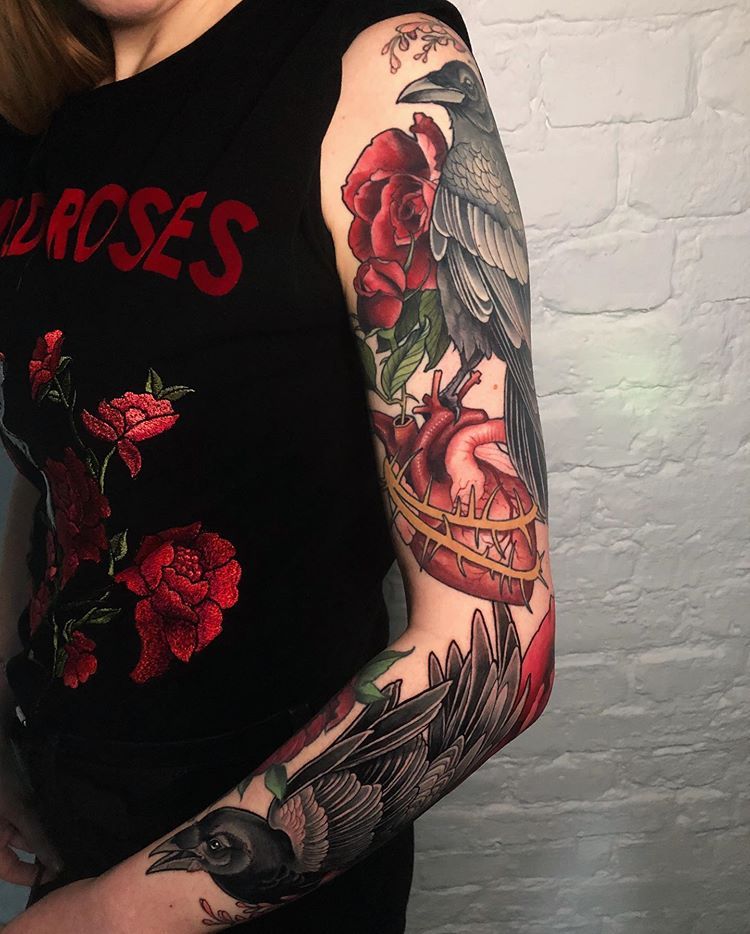
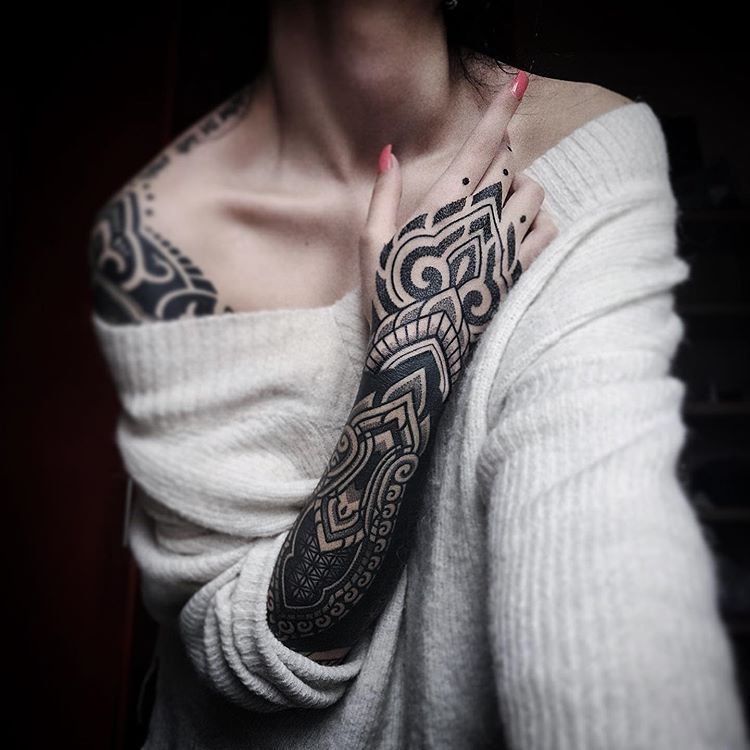
How to Use Tattoo Numbing Cream:
- 1Wash the area to get rid of dead skin.
- 2Apply a layer of tattoo numbing cream
Note:
If your client can do the first two steps at home and wrap the area loosely in plastic wrap, then you can save time during the actual appointment.
- 3Apply a layer of tattoo numbing cream
- 4Apply numbing spray every 20 minutes* throughout the session
- 5Add a layer of topical anesthetic, if needed
There’s some numbing gels that are safe to use on the broken skin during a tattoo. These are faster-acting than most creams (about 2-5 minutes). Use just a small amount, though. You don’t want extra layers to get in the way as you’re tattooing.
If a client who didn’t want numbing cream starts getting uncomfortable during their tattoo session, you can either use a numbing gel or a lidocaine spray for some quick relief. It won’t work as well as having numbed the area before, but it might give them the extra boost to keep from tapping out.
Note:
Tattoos hurt. But sometimes, clients psych themselves out because they’re nervous - not because they’re in pain. If you think that’s the case, using a bit of lidocaine spray and making sure to emphasize that it’s for pain relief will help put their minds at ease and make the tattoo much easier for them.
Our Favorite Tattoo Numbing Creams
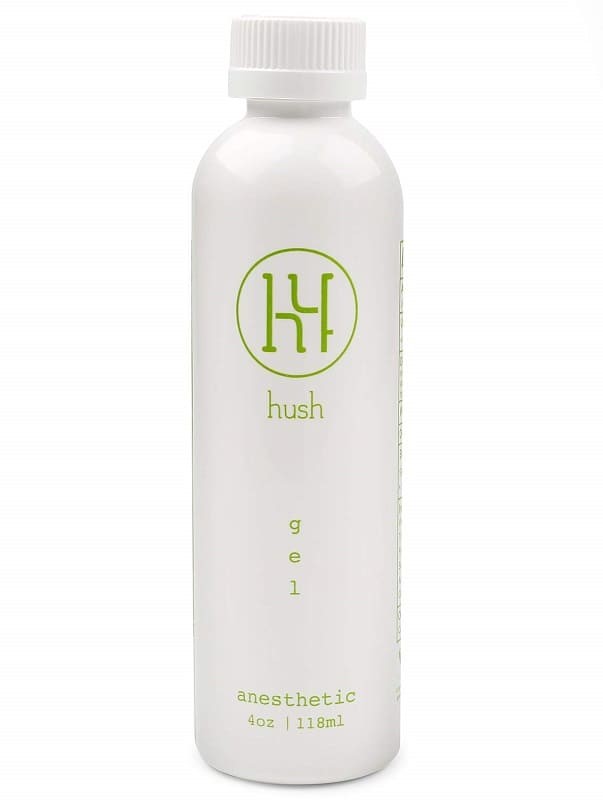 | 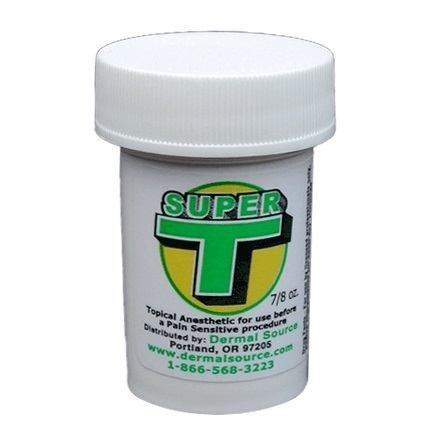 | |
Hush Anesthetic Gel with Lidocaine | Super T Topical Anesthetic | Dr. Numb Topical Anesthetic |
Why We Like It:
Used BEFORE tattoo session | Why We Like It:
Used BEFORE tattoo session | Why We Like It:
Used BEFORE tattoo session |
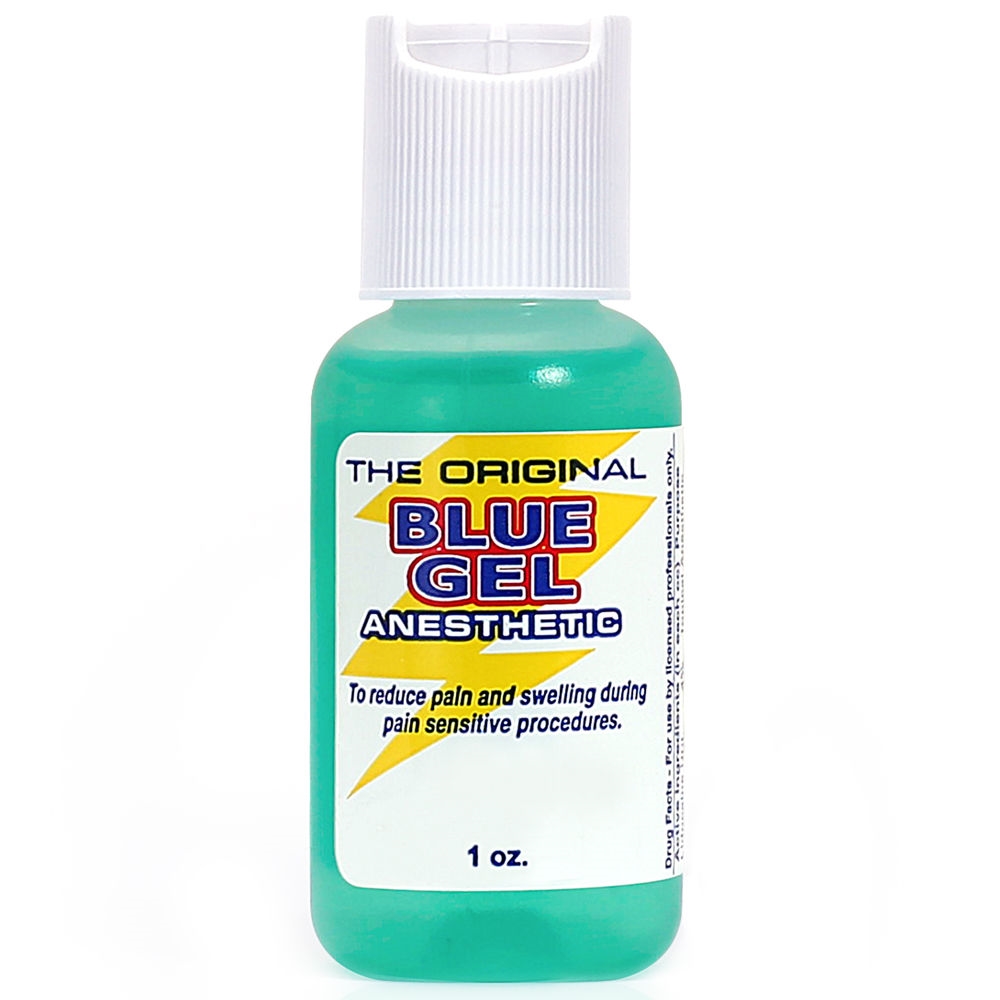 | 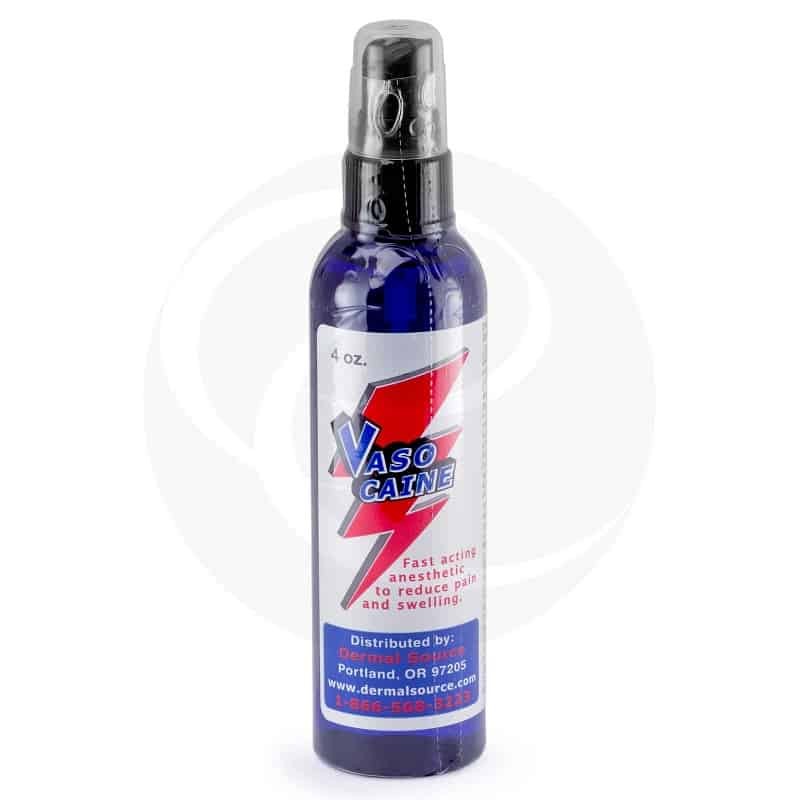 | 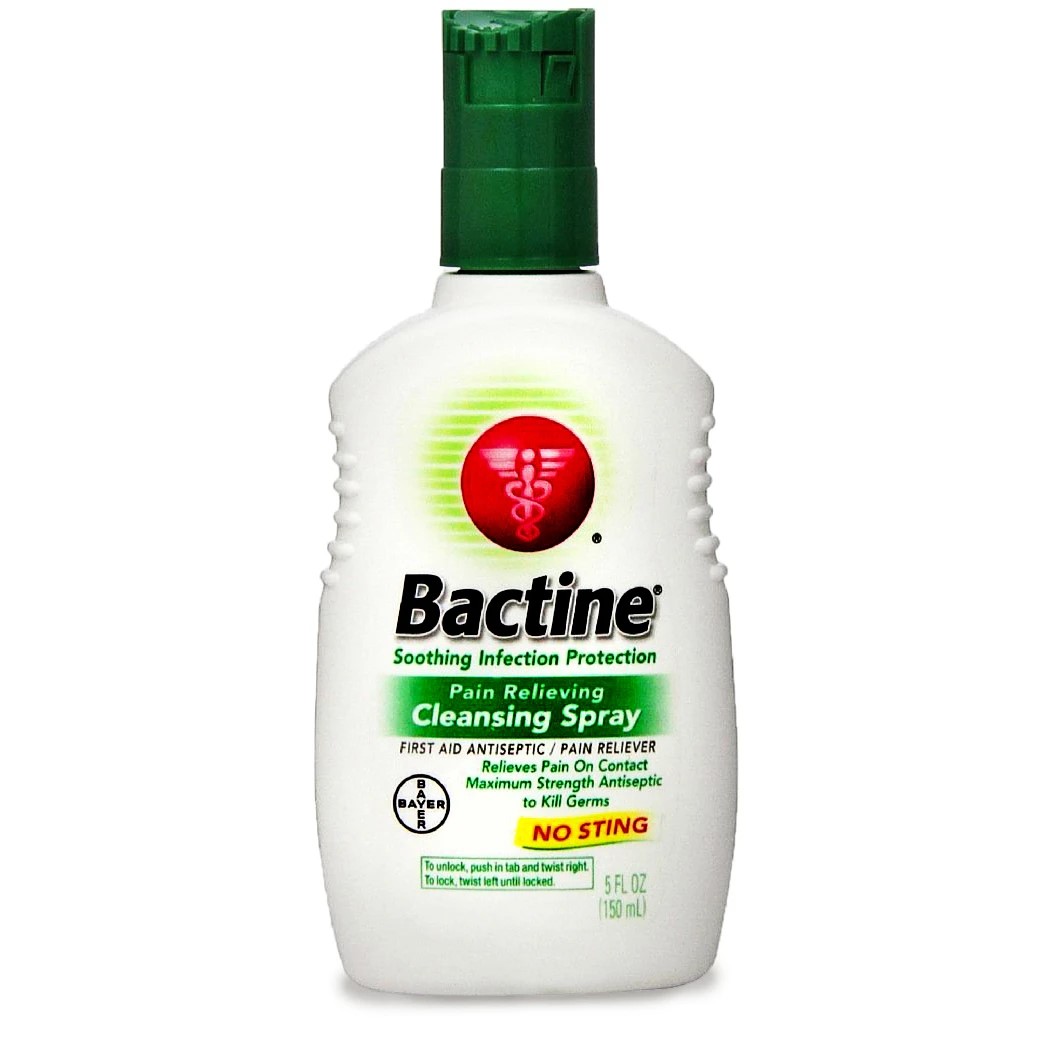 |
Blue Gel | Vasocaine | Bactine |
Why We Like It:
tetracaine, and epinephrine
Used DURING tattoo session. | Why We Like It:
epinephrine) for longer-lasting numbing Used DURING tattoo session. | Why We Like It:
deadener) and gives fast relief Used DURING tattoo session. |

Our Favorite Tattoo Numbing Creams
 |  | |
Hush Anesthetic Gel with Lidocaine | Super T Topical Anesthetic | Dr. Numb Topical Anesthetic |
Why We Like It:
Used BEFORE tattoo session | Why We Like It:
Used BEFORE tattoo session | Why We Like It:
Used BEFORE tattoo session |
 |  |  |
Blue Gel | Vasocaine | Bactine |
Why We Like It:
tetracaine, and epinephrine
Used DURING tattoo session. | Why We Like It:
epinephrine) for longer-lasting numbing Used DURING tattoo session. | Why We Like It:
deadener) and gives fast relief Used DURING tattoo session. |
Note:
Do not use all of these products together. Choose one product for before and one product for during the tattoo.
Can a Tattoo Artist Use Anesthesia Instead?
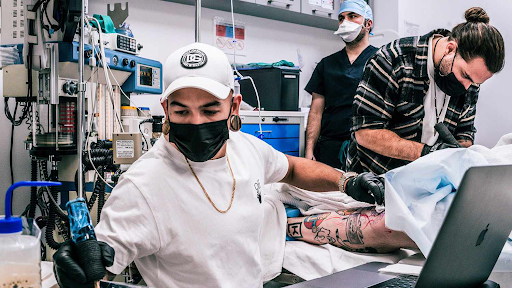
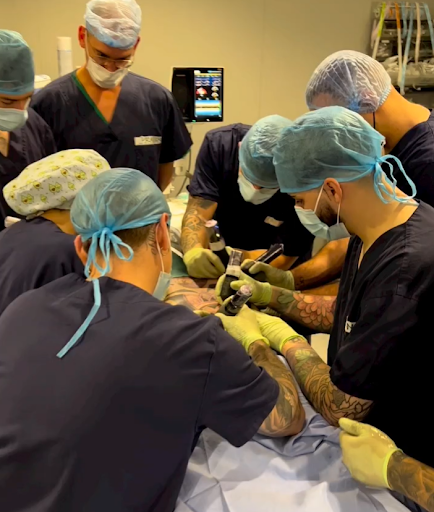
There’s no such thing as a painless tattoo…but what if your client was under anesthesia as if they were in surgery? This will keep a client from feeling anything during the painful process of getting tattooed, and this can be effective if someone is getting several tattoos done all at once.
For example, Joaquin Ganga will work with two other artists on one client while the client is under anesthesia. This allows them to get more work done in a short amount of time. However, compared to getting a piece in a tattoo shop with a topical anesthetic, this is an extremely expensive process because you need the same equipment needed for a medical procedure and pay for an anesthesiologist.
Usually, only celebrities paying upwards of $100K for their tattoo will take this option. However, it does bring up a conversation about using a local anesthetic injection to numb only the part of the body being tattooed.
Note:
Some clients and artists think this is an “easy way out” and that you have to “earn” your tattoos by enduring the pain of the tattooing process without any type of systemic or topical anesthetics.
Tattoo Numbing Cream FAQs:
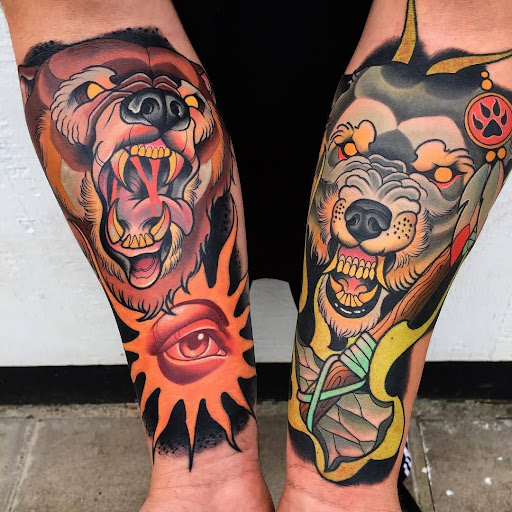
Yes. There’s no way to completely get around tattoo pain. However, making sure the topical anesthetic has enough time to take effect before starting the tattoo will make a big difference for people with sensitive skin.
About 3 hours, usually. This will vary from person to person.
About an hour. While you should carefully follow the instructions on the tattoo numbing cream bottle, most creams tell you to put the cream on 60-90 minutes before the tattoo. Leave cream on the skin to numb the pain receptors until right before the tattoo.
Plastic wrap helps activate most tattoo creams.
Even if you start a tattoo with “numb” skin, it’s unlikely that numbness will last for the entire session.
This depends on the person, but probably one that contains lidocaine, tetracaine or benzocaine, and epinephrine. For most people, a numbing cream that has all three “types” of numbing (nerve deadener, nerve blocker, and vasoconstrictor) will be most effective.
Note:
More is not better. Applying too much numbing cream too often can be dangerous, specifically for your heart. The goal with numbing cream is not to completely take away the pain, it is to make the tattoo session more bearable. A super thick layer will not prepare you more for a tattoo session.
From a tattoo supply shop or online. We recommend buying directly from the manufacturer’s website (several knockoffs are on Amazon, which you’ll want to avoid).
Yes! Using numbing agents before the tattoo will help make the tattooing process more bearable. However, the numbing cream should be completely removed before the tattoo starts and should not be left on the skin for longer than recommended.
Note:
If you want to use numbing cream for tattoos before your next tattoo appointment, make sure to talk to your tattoo artist. Tattoo numbing cream can change the texture of the skin and negatively affect your tattoo.
Yes. Tattoo numbing cream will either have an expiration date or will be good for a certain amount of time after breaking the seal. You shouldn’t use it after that time has passed.
Numbing creams can cause allergic reactions. If someone has difficulty breathing or breaks out into hives, wash the cream off and get immediate medical attention.
When used correctly. Tattoo numbing creams contain drugs like lidocaine, tetracaine, benzocaine, and epinephrine, which can be dangerous if too much gets into the bloodstream. We recommend using the least amount of these products as possible.
It depends. Some artists say that water-based numbing cream is safe to use on fresh tattoos. Others will have restrictions on which creams and lotions can be used post-tattoo. Make sure to consult with your tattoo artist before applying numbing cream.
It depends. Some clients like to use numbing cream for laser hair removal sessions. Whether this is safe to do will depend on the direction of your esthetician.
Note:
Some clients will think that drinking alcohol or taking painkillers before a tattoo session will help with the pain. This is not true. In fact, drinking alcohol will dehydrate them and make the tattoo hurt more, and taking painkillers can thin out the blood and make them bleed more. This is why a local anesthetic like a numbing cream is the best option for tattoo clients.
Learn to Tattoo From Professional Tattoo Artists
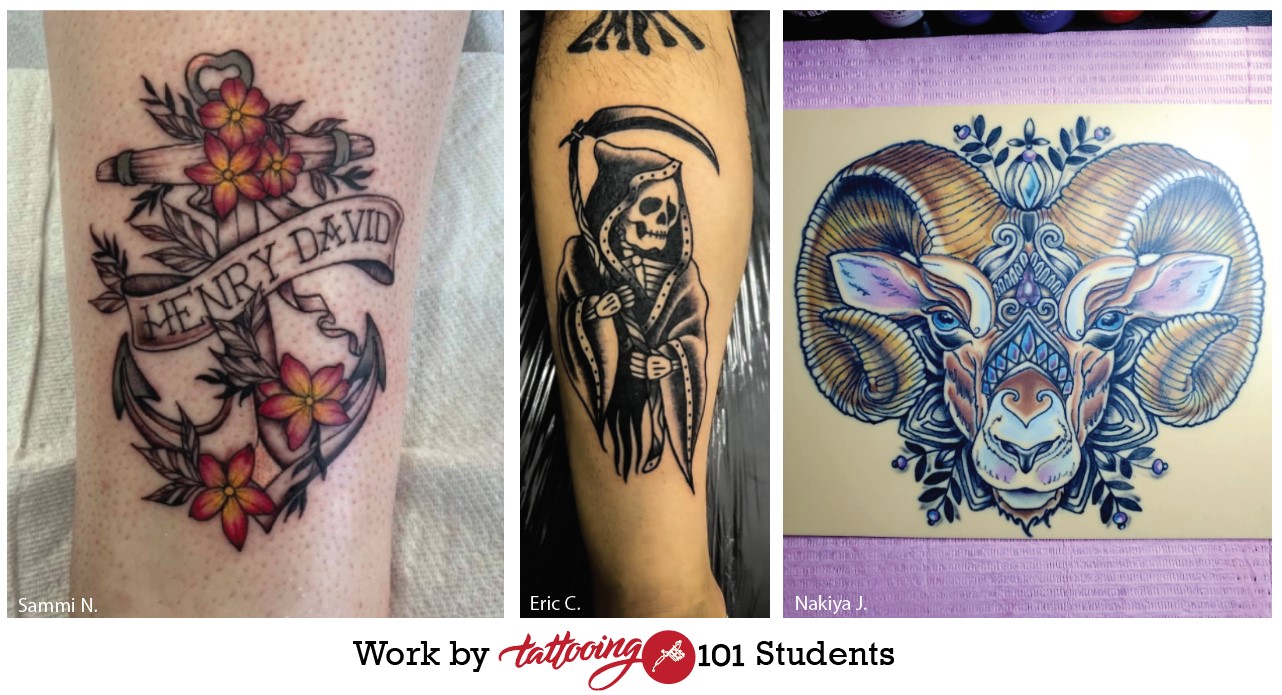




Thanks for the helpful insights on tattoo-numbing creams!